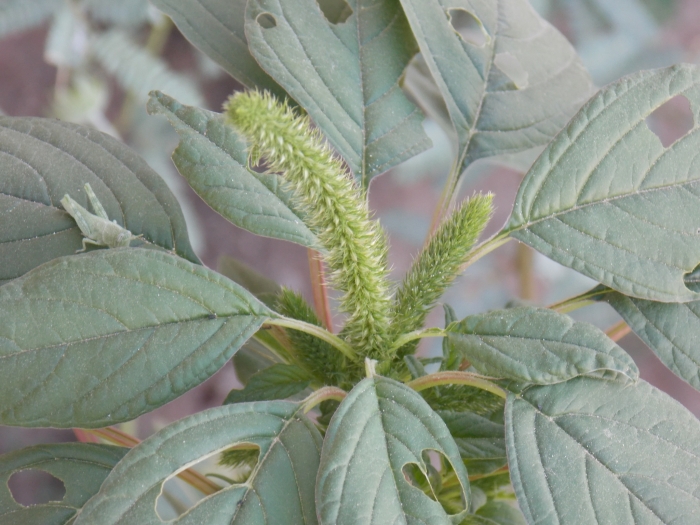Palmer Amaranth
(Amaranthus palmeri)
Palmer Amaranth (Amaranthus palmeri)
/
/

© Eliseo D Moreno
CC BY-SA 4.0
Image By:
© Eliseo D Moreno
Recorded By:
Copyright:
CC BY-SA 4.0
Copyright Notice:
Photo by: © Eliseo D Moreno | License Type: CC BY-SA 4.0 | License URL: http://creativecommons.org/licenses/by-sa/4.0/ | Uploader: heyitshelios | Publisher: iNaturalist |























Estimated Native Range
Summary
Amaranthus palmeri, commonly known as Palmer amaranth or Palmer’s pigweed, is an annual herb that is native to arid regions, desert washes, and scrublands of the central and southwestern United States and northern Mexico. It is a fast-growing and highly competitive plant that can reach heights of 6-8 feet (1.8-2.4 meters). Palmer amaranth has a robust, erect stem with green to reddish leaves that are ovate to diamond-shaped. The plant produces dense, bristly flower spikes in summer, which are typically green but can also be red. It is dioecious, with separate male and female plants. The female plants produce copious amounts of seeds that contribute to its invasiveness.
Palmer amaranth is valued for its rapid growth and has been traditionally cultivated by Native Americans for its nutritious leaves, stems, and seeds. It is also used as a forage or silage crop, but caution is advised due to its potential toxicity to livestock from nitrate accumulation. In cultivation, it thrives in full sun and well-drained soils but is highly adaptable to various conditions. It is drought-tolerant once established and requires minimal care, making it a low-maintenance option for xeriscaping. However, due to its invasive nature, it is not recommended for ornamental use and should be managed carefully to prevent it from becoming a weed problem.CC BY-SA 4.0
Palmer amaranth is valued for its rapid growth and has been traditionally cultivated by Native Americans for its nutritious leaves, stems, and seeds. It is also used as a forage or silage crop, but caution is advised due to its potential toxicity to livestock from nitrate accumulation. In cultivation, it thrives in full sun and well-drained soils but is highly adaptable to various conditions. It is drought-tolerant once established and requires minimal care, making it a low-maintenance option for xeriscaping. However, due to its invasive nature, it is not recommended for ornamental use and should be managed carefully to prevent it from becoming a weed problem.CC BY-SA 4.0
Plant Description
- Plant Type: Herb
- Height: 3.25-6 feet
- Width: 0.25-2 feet
- Growth Rate: Rapid
- Flower Color: Green, Red
- Flowering Season: Summer, Fall
- Leaf Retention:
Growth Requirements
- Sun: Full Sun
- Water: Medium
- Drainage: Fast, Medium, Slow
Common Uses
Erosion Control, Low Maintenance
Natural Habitat
native to arid regions, desert washes, and scrublands of the central and southwestern United States and northern Mexico
Other Names
Common Names: Palmer’s Amaranth, Palmer amaranth, Dioecious Amaranth, Palmer pigweed
Scientific Names: , Amaranthus palmeri, Alternanthera palmeri, Amaranthus gonzalii, Amaranthus gonzaloi, Amaranthus palmeri var. glomeratus,
GBIF Accepted Name: